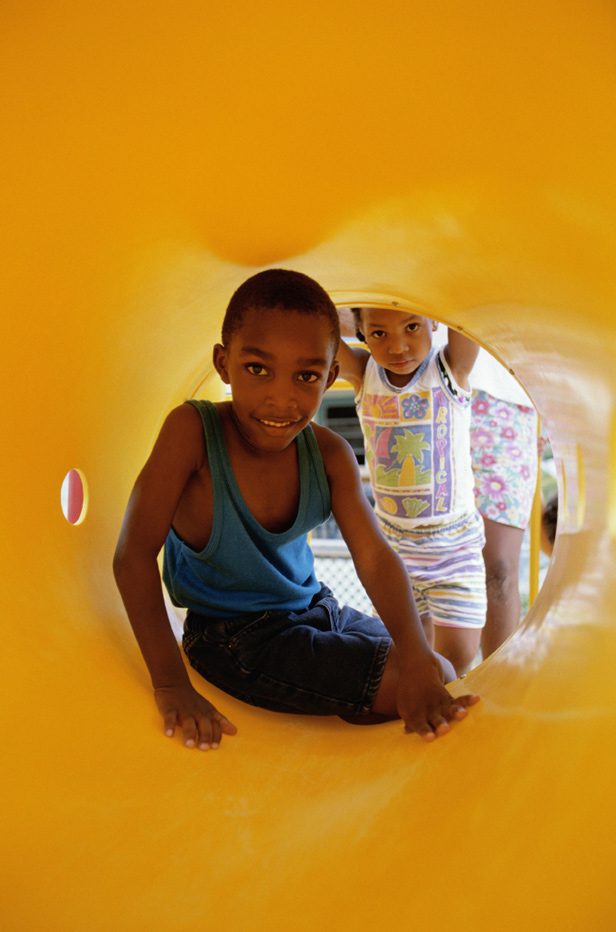
Remember what distinguishes the Second Plane of Development, that window from six to twelve years old. Moving out of the "construction of the individual" that marks zero to six, children in the Second Plane are capable of more abstract thinking, of moral reasoning and far more complex social development. The essential Freedom of Movement takes on new importance in this plane, moving from the physical growth and cognitive impact of early childhood to be an important tool as children develop relationships with others and a sense of themselves.
You'll see children in Elementary classrooms moving more often and with far fewer restrictions than you might remember from traditional schooling. There are no rows of individual desks. There is no board at the front of the room for the teacher to direct lessons in front of. Instead, learners are spread throughout the space, moving as their bodies and their social structures demand it. The Montessori classroom is designed to both protect the child's need to move and to leverage it as a support to other learning.
For example, this is a window during which the pace of children's physical development can be less predictable and with fewer overlaps between children. You'll see children of the same chronological age with wildly different physical development, or children who seem to have grown four inches overnight. Children in Elementary need to have space to stretch these new bodies, to learn to coordinate them again and to master the changing proportions. It's no surprise that Elementary children who are required to sit still for extended periods of time struggle more with attention and concentration. Indeed, it seems like traditional classrooms are designed often to squelch children's intrinsic need to move at exactly the time they need to move most. Instead, Montessori classrooms give them more opportunities to move: tables of varying heights, stools for sitting on, counters to stand at while they work, indoor spaces and outdoor spaces to match the variation of need.
Likewise, Montessori Elementary classrooms are designed to leverage a learner's need for movement as they also begin to refine their ability to organize information more complexly. While Early Childhood environments are notable for having every item a child needs for a lesson beautifully presented with the lesson, Elementary classrooms spread materials throughout the classroom. Pencils may be in one area, paper in another, and trays for carrying supplies someplace else. Children need to think differently here about what they'll need, to plan and sequence the collection of all those items, and to do so while navigating an environment that is often filled with larger people and more of them.
Finally, because learners at this plane are so intrinsically driven to time with their peers, the classroom allows space for groups of children to gather together comfortably. You might see a corner filled with large floor pillows for group collaboration or larger tables at which four or five friends can gather together. You may notice wide open spaces on the floor for group lessons. These wide open areas are less likely in Early Childhood classrooms, where children prefer smaller spaces and teachers avoid creating architectural runways for children who may not yet have developed the ability to regulate their impulses to run. In Elementary spaces, though, they allow for the gathering of larger groups of bigger children, sitting upright or lying on the floor or kneeling or splaying their newly foal-like legs, to be together comfortably during the Great Lessons or more advanced group presentations.
Because we understand a child's need to move to extend throughout their lives, Montessorians don't limit the Freedom of Movement to Early Childhood. Instead, we design classroom spaces that prepare for it, knowing that if we can offer content in a developmentally-responsive environment, learners can master that content in a more authentic and lasting way. While the Elementary classrooms may not look as orderly as the Early Childhood classrooms that precede them, they are equally responsive to the development of the learners they serve, beginning with this foundational freedom to move.
#Movement #Elementary #SecondPlane #ForParents #ForTeachers #Theory
